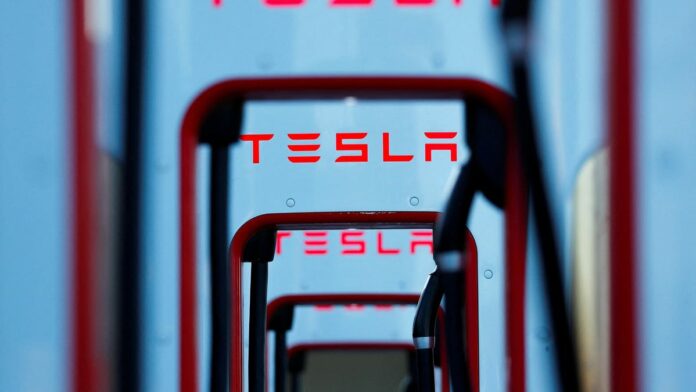Lucid Motors finally hopped on the Tesla charger wave. In 2025, its electric vehicles will be able to charge at the Tesla Supercharger network by using an adapter, and future vehicles will come fitted with Tesla’s North American Charging Standard (NACS).
“We believe that a unified charging standard, backed by the nationwide rollout of future-ready higher-voltage charging stations, will be a critical step in empowering American consumers to adopt electric vehicles,” Lucid CEO Peter Rawlinson said.
Musk posted on X that Lucid’s decision must have been “a bitter pill to swallow.”
Just months ago, in June, Rawlinson dodged questions about making the switch. But a lot has changed in the last few months. In May, Ford kicked off the shift to Tesla’s superchargers—and now, a dozen automakers have adopted the tech. The list includes both established carmakers like General Motors (GM), Volvo, Nissan, Mercedes-Benz, Jaguar-Land Rover, Hyundai, BMW, and Toyota, as well budding EV startups like Rivian, Polestar, and Fisker.
In July, Rawlinson had already let on that Lucid was open to the idea of adopting Tesla’s tech. And judging by the company’s subpar financial results yesterday (Nov. 7), complete with sliding revenue and production cuts, flowing with the current seems more sensible than fighting against it.
Although Lucid was late to the party, it’s not the last one in the door. A couple of companies are still parked in the driveway, refusing to come in.
Companies of interest: Volkswagen and Stellantis
Two major automakers—Volkswagen and Stellantis—have still not committed to Tesla’s NACS.
The owner of Chrysler, Jeep, and Dodge brands, Stellantis, said it was “evaluating” the charging connector in June. Later that month, Volkswagen Group, which owns its namesake brand, Audi, Porsche, Bentley, and more, was reportedly in talks with Tesla for the same. There’s been no further word on either since.
Most manufacturers have made the switch because public charging with CCS has often proven unreliable and inconvenient given spotty coverage, broken chargers, and billing woes. Besides offering wider coverage and more reliable service, Tesla’s plug itself is also lighter and easier to maneuver than the CCS connector.
Industry watchers believe it’s only days before VW and Stellantis jump on the bandwagon, too.
One big number: Tesla’s supercharger network for all
15,000+: Number of Tesla superchargers the likes of Lucid and Ford are adding to their network.
Why does Tesla want every carmaker to use NACS?
Tesla is growing, but the market is growing faster. While Tesla owners are the bulk of EV users in the US today, Tesla’s market share is falling. It comprises just half of the EV market as of October, down from almost eight in ten EV owners being Tesla buyers in 2020.
Of course, bringing on so many partners will add more uncontrollable factors to the mix. Part of the reason why Tesla has been able to avoid long queues and maintain high standards is because it’s been a closed ecosystem, mainly for Tesla customers. As the burden of customers increases, it has to sustain that level of service.
Quotable: Tesla is building an ecosystem
“I think there’s a piece of this where Tesla wants to move to the next phase, competing more on the appeal of their entire system and not just the product. They’re going to have lower margins on the product, and way more competition, but pushing the home chargers you can buy and bundle with it, or the autonomous drive and autopilot features, plus now the revenues from letting other BEVs use their superchargers—and other stuff where they’re still ahead of everybody else—that’s a way they hope to keep valuations crazy high.”
—John Paul MacDuffie, a professor of management at the University of Pennsylvania’s Wharton School


